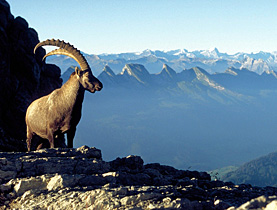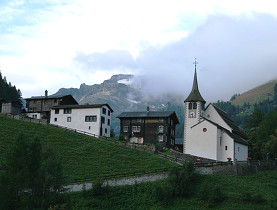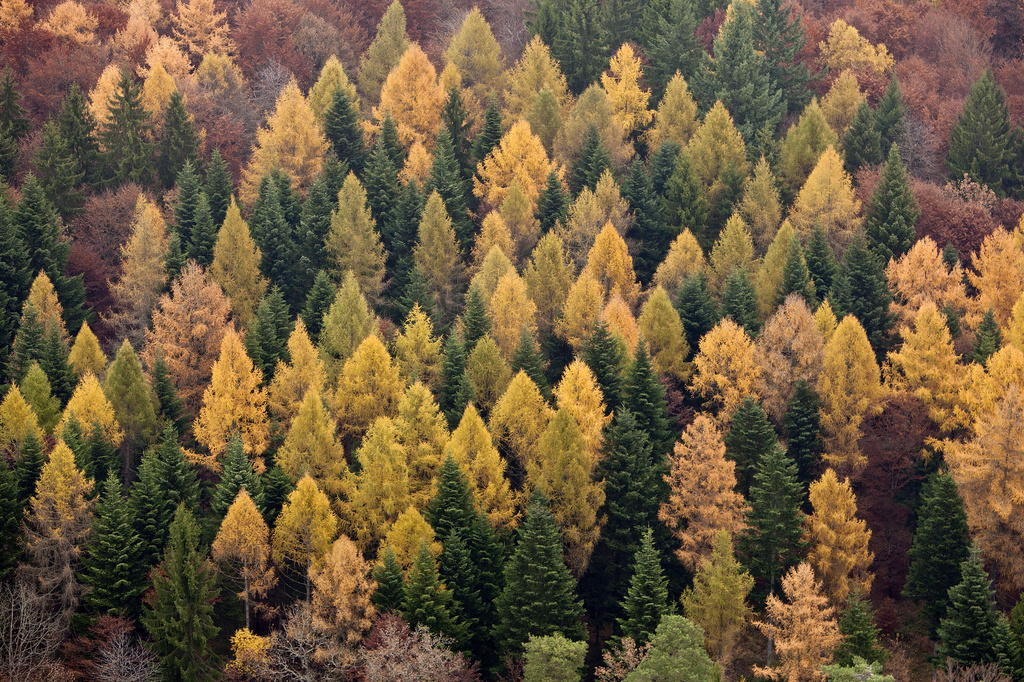Val Sinestra wins Swiss landscape prize

The Val Sinestra in the Lower Engadine valley of eastern Switzerland has been awarded the “Landscape of the Year 2011” award.
The intact state of the landscape and the beauty of the valley were decisive factors in the decision.
A new honour launched by the non-profit Swiss Foundation for Landscape Conservation (SL), the main voice for landscape conservation and planning in Switzerland, it is intended to highlight landscapes threatened by urbanisation.
It is the first award of its type internationally too, according to the SL.
Nevertheless, it enters a field already packed with preservation awards, including Unesco recognition of Swiss landscapes as World Natural Heritage Site and the Wakker prize of the Swiss Heritage Society.
“We thought long and hard before launching ‘Landscape of the Year 2011’,” said SL head Raimund Rodewald.
“Our preparation time amounted to two years, during which we examined the pre-existing international and Swiss awards very carefully”.
After determining there was nothing quite like it anywhere, the SL decided to go forward.
They saw the advantages of formally recognising landscapes as geographical entities of value with distinct identities outweighing possible disadvantages.
“We originally envisaged this award as a means of marking our 40th anniversary,” said Rodewald.
“But not as a means of advertising our foundation, because in fact we have no need of it.”
Broad support
While the SL is the main pillar of the landscape award, it partnered with business, tourism, the region and local communities in creating it.
Rodewald sees this wide-ranging support as proof that the many prizes given out for natural beauty are much more than simply temporary solutions to pressing problems.
The SL wanted “to stand up for the countryside, and to stop the continually increasing urban sprawl and destruction of the landscape”, said Rodewald.
The SL decided not to limit the award solely to beautiful landscapes.
“We started from the premise of a landscape that represents natural and human habitats in harmonious co-existance. The Val Sinestra fulfilled our criteria of the interconnectedness of man, culture, and nature beautifully.”
“In giving this award, we also wanted to honour the involvement of the regional inhabitants, how they engage with the countryside, and what they forego to preserve nature with regards to tourism and above all in spatial planning and development.”
The communties of Ramosch and Sent, within which the Val Sinestra lies, were singled out for particular praise.
Tourist flood
Up to now, the Val Sinestra has not been a high profile tourist destination, something that could change with the award.
For the SL, such a development would be unwelcome.
“We deliberately avoided large touristic activities around this award. We are in a region that has for many years been known for quality or ‘slow’ tourism,” said Rodewald.
He doubts that new streets will be built or tourism will suddenly boom.
Victor Peer, mayor of Ramosch, agrees.
While he is not concerned about a flood of tourists, he has not ruled out an increase in visitors.
“Traditionally, Ramosch has not really been able to do much in terms of tourism promotion. We are now thinking about how we could position ourselves, what with our beautiful landscape, rare plants and biotopes.”
The area would like to benefit economically from its tourism potential, but within limits.
“Of course, we do not want the area to be flooded with tourists. As long as tourists are only walking and hiking though there is certainly no danger of the countryside being overrun, ” said Peer.
For Peer the “Landscape of the Year 2011”award is not only a great honour, but also “an incentive to keep the valley as it now is.”
Recipient of the “Landscape of the Year 2011” award (SFr5,000), Val Sinestra is in the Lower Engadine valley in canton Graubunden.
It lies within the boundaries of Ramosch and Sent, which are known for careful, “soft” tourism development in harmony with nature.
The wild mountain stream that runs throught the Brancia valley showcases the harmonious interaction between nature (mainly forest) and the cultural landscape. It boasts extraordinarily biodiversity and numerous orchid.
Another phenomenon of note are the pyramids which have formed over centuries into earth towers with boulders on top.
Of cultural importance are the 100-year-old “Val Sinestra” sanatorium, and the working Hotel Berggasthof Zuort with chapel.
The SL was founded in 1970 by Pro Natura, Swiss Heritage Society, the Swiss Association for Regional Planning (VLP-ASPAN); the Swiss Alpine Club (SAC) and the Swiss Tourism Association.
It is a charitable foundation focused upon the conservation, preservation, and appreciation of valuable Swiss landscapes.
(Adapted from German by Kathleen Peters)

In compliance with the JTI standards
More: SWI swissinfo.ch certified by the Journalism Trust Initiative















You can find an overview of ongoing debates with our journalists here . Please join us!
If you want to start a conversation about a topic raised in this article or want to report factual errors, email us at english@swissinfo.ch.